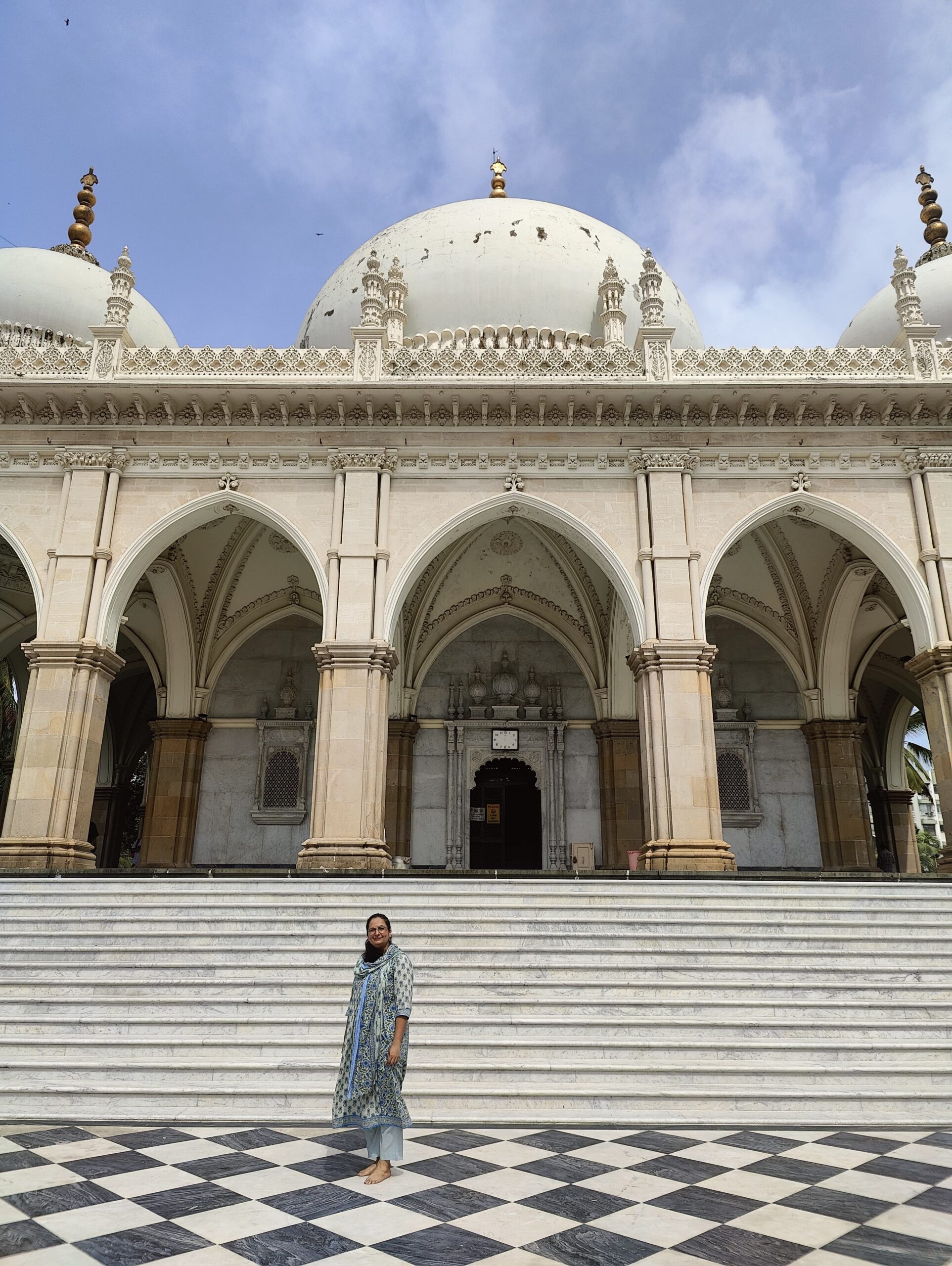Hasnabad Dargah in Mazgaon is one of Mumbai’s best-kept secrets. This grand, 19th-century mausoleum, inspired by the Taj Mahal, is an architectural wonder dedicated to Aga Khan.
When I saw the pictures online, I couldn’t believe that such a grand mausoleum exists in the heart of Mumbai. What’s even more surprising is that very few people know about the Hasnabad Dargah, which has real gold and silver in some parts. I was intrigued and had to see the grandeur myself.
Amidst a web of crowded lanes and small shops, stands the imposing 19th-century mausoleum that was inspired by the Taj Mahal. The mausoleum is built in the Indo-Islamic architectural style with three large, bulbous white marble domes, symbolizing the Islamic heavens. The four minarets flank the corners of the square plinth, similar to the Taj Mahal’s design.
Image Credits: Riddhi Doshi
The structure employs fine marble and stone masonry, showcasing intricate craftsmanship, including the jail work. One can also see beautiful floral patterns and calligraphy embedded in the marble using inlay techniques, a hallmark of Mughal design. Symmetrical arched entrances and windows are prominent, framed by scalloped designs typical in Islamic architecture.
Like Mughal tomb gardens, Hasnabad has water tanks and small gardens around it, symbolizing paradise. The actual grave (maqbara) is simple, located beneath the dome, while the upper cenotaph is ornamental.
Image Credits: Riddhi Doshi
The mausoleum was built in memory of Syedi Hasan bin Noor Mohammed Noorbhoy or Aga Khan I. He was a highly respected and wealthy Bohra philanthropist from the 19th century. Built around 1884, the mausoleum reflected the growing prosperity and prominence of the Dawoodi Bohra merchant community, who migrated to India from Iran. There are also graves of other family members of the religious leader in the basement.
The Bohras, who were largely involved in trade and commerce, had established themselves as an influential group in Mumbai by the late 19th century. And the construction of Hasnabad was symbolic of both piety and prosperity, reflecting the community’s emphasis on commemorating their notable figures with grandeur. Its design, heavily inspired by the Taj Mahal, reflects the community’s connection to Islamic artistic traditions, while also asserting their place within the cosmopolitan urban fabric of Bombay.
Today, Hasnabad stands as one of the few monuments that is excellently preserved and is often visited by study groups from prestigious universities, including Harvard. And for me, it’s yet another example of my city’s rich cosmopolitan past that has nurtured people of different faiths and beliefs from the very beginning.
Image Credits: Riddhi Doshi
Article is written by Riddhi Doshi.












One Response
Your blog is a treasure trove of valuable insights and thought-provoking commentary. Your dedication to your craft is evident in every word you write. Keep up the fantastic work!